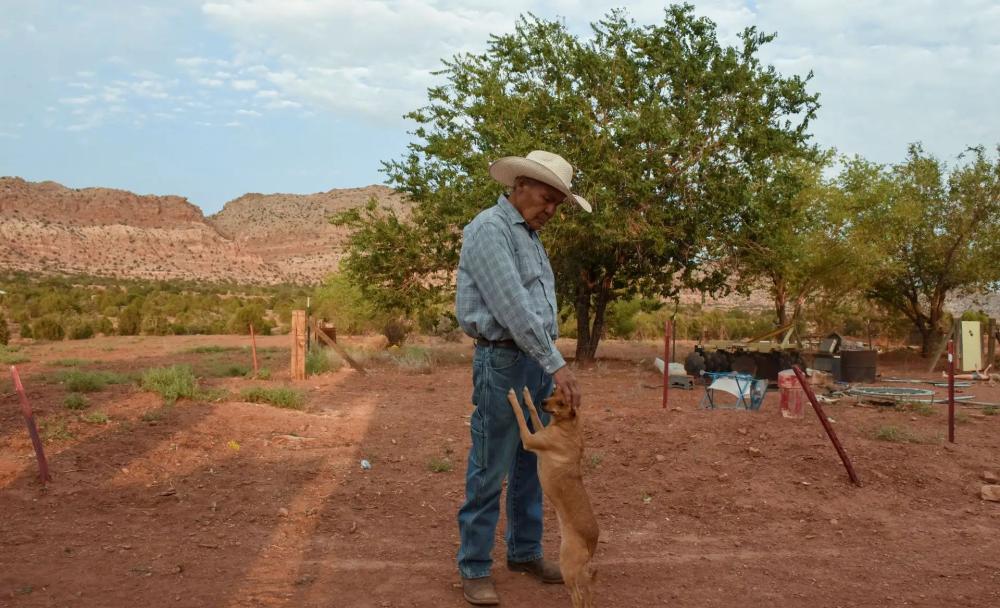According to CNN, scientists have found that the western United States is currently facing its worst drought in centuries. Between 2000 and 2021, the region's driest period in 1,200 years, was particularly severe last year, and this extreme situation continued into 2022.

Today, the entire Midwest of the United States is in deep drought, and the situation in California and seven southwestern states is not optimistic, of which Los Angeles received less than 0.1 inch of precipitation in January this year.
The United States has a large amount of black land, is the world's important food production area, in the millennium of the great drought, will certainly threaten the United States agriculture, and even cause the United States food crisis.
So the question is, how did this millennium drought come about?
There has been no major drought in the millennium
According to an article in the journal Nature Climate Change, scientists analyzed four major droughts since 800 AD and found that the Great Drought in the Western United States, which lasted from 2000 to the present day, was worse than the Great Drought of the late 16th century.
Based on changes in humidity and tree rings, it was found that the drought really began in 2002 and continues until now. More worryingly, the drought may not ease in 2022 and may continue for years.
According to a teaser released by the National Oceanic and Atmospheric Administration (NOAA), temperatures in the Midwest are expected to be above historical averages in April, with nearly 60 percent of continental droughts more than 50 percent likely to persist.
There are many reasons for the drought, and the US study calculates that 42% of the factors can be attributed to climate change, such as the burning of fossil fuels and the cutting down of trees, which cause a large number of greenhouse gas emissions. Greenhouse gas emissions have led to global warming, causing temperatures to rise here.
High temperatures are reducing snow in the western U.S. mountains, which are the source of many rivers, with seasonal snowmelt being an important source of recharge. But more precipitation today falls in the form of rainfall rather than snowfall, which causes the water to fall quickly downstream or be absorbed by dry land.
In addition, high temperatures also exacerbate water evaporation, soil and vegetation are forced to lose more water, and the soil is drier, making many places in the United States experiencing a super drought that lasts for more than 20 years, and the super drought is easy to lead to frequent wildfires.
A study published in the journal Science Advances found that since 2000, fires across the U.S. mainland have grown fourfold in size and three times more frequent.
Comparing the wildfire accidents in 1984-1999 and 2005-2018, it can be seen that the original wildfires were mainly concentrated in the western region, but now wildfires in the central and southern regions are also frequent.
Comparing the topographic map of the United States, it can be seen that the western part of the United States is the Rocky Mountains, the Sierra Nevada Mountains, etc., between the two mountains, there is a huge basin, but because of the barrier of the mountains, water vapor is difficult to enter here, so the western plain area has less precipitation, desert, desertified climate.
The eastern part of the United States is the Abalalades Mountains, and the central part is an endless great plain, which, combined with the moisture of the Mississippi River, makes this an important food-producing region in the United States.
In the past, droughts in the United States mainly occurred in the western region, but now they are gradually spreading to the central part, which is an important food-producing area, and the drought here is a very big blow to American agriculture.
Coupled with the fact that today's mega-drought not only shows no signs of abating, but also has a gradual trend of expansion, it is very unfavorable for American agriculture, and may even cause the United States to face a food crisis.
According to NASA's 2019 estimates, for every 1 degree Celsius increase in global average temperature, corn yields are expected to fall by 7%, wheat is expected to fall by 6%, and soybeans are expected to fall by 3%. When global warming is superimposed on droughts and wildfires, crop yields will be lower.
Countermeasures
The drought in the Midwest has been going on for a long time, and there is no better solution there, except to dig multiple large open pits to collect rainwater and replenish groundwater.
The government advocates the use of every drop of wastewater, and the artificially discharged sewage will be re-supplied to the residents after being purified. The extreme drought has also led to a surge in demand for groundwater, which is replenished at a slower rate, and once groundwater is over-extracted, the impact on the local area may last for decades, or even centuries.
One of the main causes of drought in the Midwest of the United States is global warming, and the impact of global warming is not only high temperature and drought, but also makes "the dryer and the weter" more wet, for example: the western United States faces a severe drought, but the eastern United States faces flooding.
Global warming will also exacerbate extreme weather, such as: extreme cold waves in winter to move south, and the millennium has not encountered major floods, hurricanes, tornadoes and so on.
Therefore, the large-scale drought in the western United States is actually a reminder to mankind: reduce greenhouse gas emissions, unite the forces of all countries in the world, and concentrate on global warming.